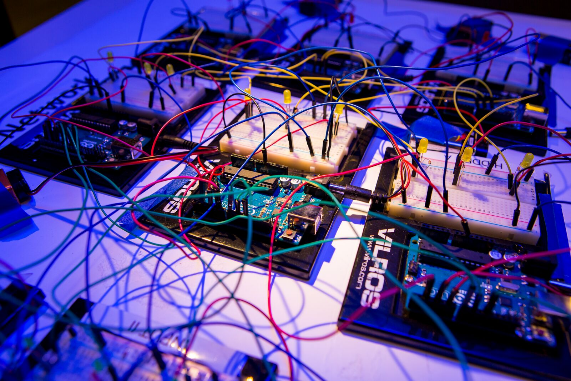Computer Science Arduino-Based Neural Network: An Engineering Design Challenge
A 1-Week Curriculum Unit for High School Computer Science Classes.

In this unit, students will design, construct, and test a six to eight node Arduino network as a model of a neural network as they explore introductory programming, computer engineering, and system design. The engineering design challenge is placed within the context of sensorimotor neural engineering.
- In Lesson One: Introduction to Brain-Computer Interfaces, students will watch a video and consider the needs of end-users to flow chart a design for a brain-computer interface device.
- In Lesson Two: Introduction to Neural Network Reading Assignment, students will explore the idea of modeling a neural network by reading an article about a model of the worm nervous system and evaluate different pictorial abstractions present in the model.
- In Lesson Three: Abstraction, students will abstract their design challenge problem, define and prioritize criteria, and refine constraints.
- In Lesson Four: Design and Construction of a Neural Network, students will work in teams to design a subsystem using Arduino microcontrollers and then network with other teams to build a model neural network, debugging and iterating on their designs as they progress.
- In Lesson Five: Reflection and Evaluation, students will use the success criteria to evaluate their designs, reflect upon strengths and weaknesses, and propose improvements.
Some of the lessons in this unit feature special equipment, including microcontrollers (Arduino Uno).
The lessons were developed by Denise Thompson of Orting High School (Orting, Wash.) and Paul Zimmer of South Kitsap High School (Port Orchard, Wash.) as part of the 2015 CNT Research Experience for Teachers program.
- Lesson One: Introduction to Brain-Computer Interfaces
- Lesson Two: Introduction to Neural Network Reading Assignment
- Lesson Three: Abstraction
- Lesson Four: Design and Construction of Neural Network
- Lesson Five: Reflection and Evaluation
